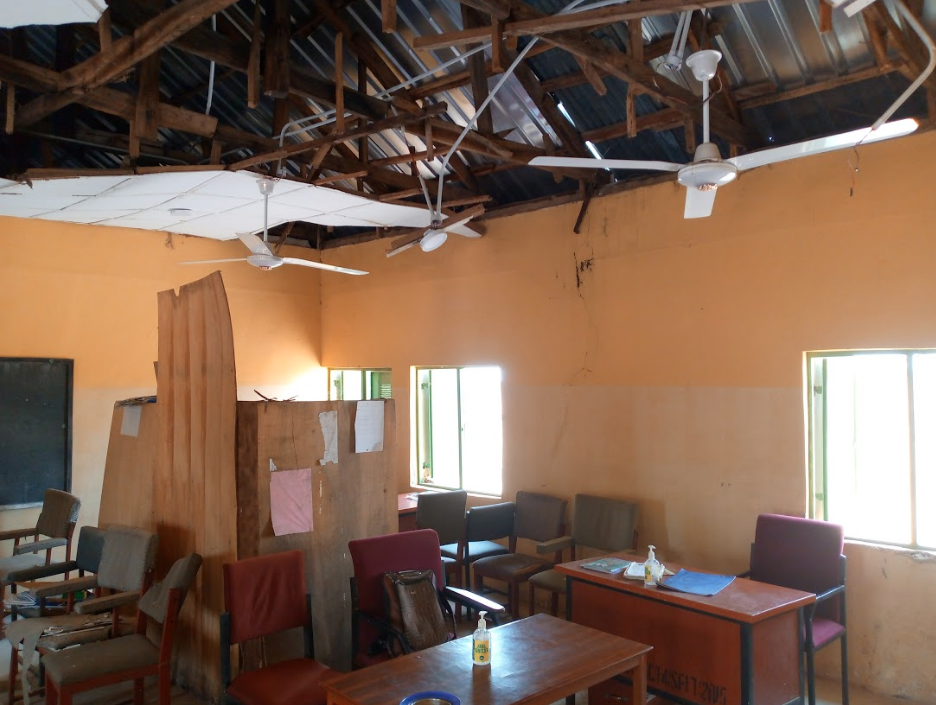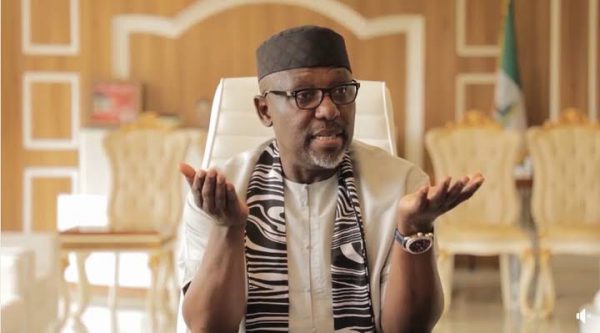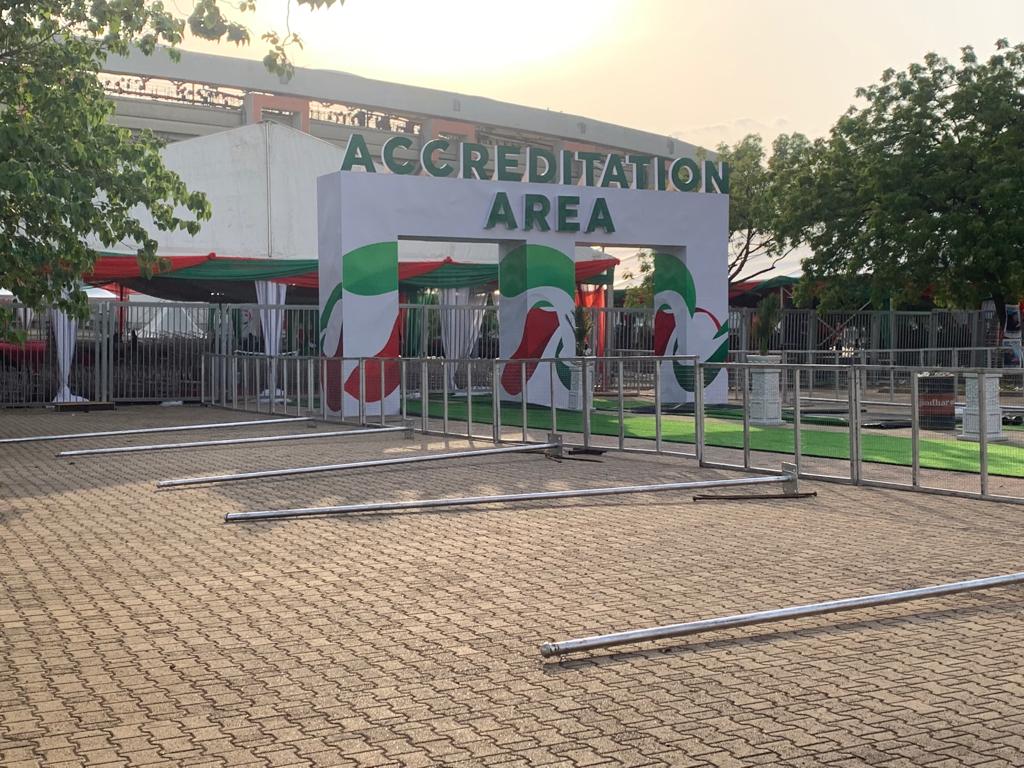BY DORCAS EDET
Recently, one of HipCity Innovation Centre’s community monitor sent in pictures taken in a couple of primary schools in the FCT. These pictures showed pupils learning under deplorable conditions. The classrooms were overcrowded and at least half the class was sitting on the floor. According to the monitor, the overcrowding was due to the fact that some of the school classroom blocks had had their roofs blown off by the wind, leaving them completely exposed to the elements; and in a bid to ensure that the pupils do not completely miss out on their lessons despite the lack of functional classrooms, the schools’ management crammed them together in the few available classrooms to learn.
As you can well imagine, it was a sorry sight and particularly saddening to this writer who happened to have attended one of the schools growing up, some 18 years ago. Well, then the roofs were intact, even though like today, pupils had to make do with the floor since there were never enough desks to go round. In fact, ‘snagging’ a desk for the day used to be a major motivator of punctuality for us pupils, because the earlier you came, the higher your chances of sitting on a desk for the day. Little wonder in the four years yours truly spent there, I could barely spell “is” and when at last my folks decided to do something about my poor educational and cognitive performance, they withdrew me from the school and got me enrolled in a private school.
Within the space of three months, which is one term, I had accomplished what I could not accomplish in four years in that public school. What changed? Not the curriculum certainly, not even the teachers per se, but the environment. I moved from overcrowded classrooms to a classroom with less than 15 pupils. Everyone had a desk to sit on, one did not have to come to school extra early in order to find a decent place to sit or be bullied out of a seat by the “bigger boys”. Teachers knew every pupil personally – their proclivities, quirks, weaknesses and strengths because of the small class size. We also had swings and many other playground equipment to play with at break times, and my play routine could finally move beyond “suwe” and “tinko tinko”. Suddenly, school stopped being about stuffy classrooms, bullies, anxiety over sitting arrangements, noise, dirty floors, lack of basic amenities like water, electricity to power bulbs and fans and a functional toilet; it became fun. Where before, I had to be prodded to go to school, now, I could not get enough and of course, it reflected on my academic performance.
Advertisement
My story is an example of the importance of a conducive environment for the effectiveness of learning. As with any endeavour, the place of a comfortable environment cannot be overlooked if the goal is to achieve any sort of success or positive result. This, therefore, leads one to wonder why something as pressing as a whole school block losing its roof should be allowed to linger to the point where the ideal classroom pupil to teacher ratio was compromised repeatedly. That is if said ratio was even maintained in the first place because, with these public primary schools, one can never be too sure. In my day, we could not have been less than 100 in any of the classes in the school and yet the highest we would have then was two teachers to a class if we were lucky. Although the education guideline stipulates a 1:35 teacher to pupil ratio, it is also commonsensical that the smaller the class, the easier for the teacher to perform his/her duty effectively. A good pupil-teacher ratio is no doubt an apt measurement of the quality of education a child stands to get in any school.
Various international conventions and national legislation at both the state and federal levels agree that education is indispensable in the development of any nation and specify that basic education should be made compulsory and free. The most popular of such legislation is the Universal Basic Education Act 2004 which not only delineates the government’s role and shares responsibility between the three tiers but also highlights the role of parents/guardians and how this basic education is to be financed. According to the act, basic education starts from pre-primary to junior secondary school and the federal government is tasked with ensuring uniformity and offering support to the state and local governments whose duty it is to provide this free education and ensure that every parent and guardian avails their children/wards the opportunity to benefit from the free education provided, or risk being sanctioned according to the provisions of the act. The act also made for the establishment of the Universal Basic Education Commission (UBEC) to oversee implementation at the federal level and the State Universal Basic Education Board (SUBEB) at the state level.
The federal government is mandated to finance the UBE through a block grant of at least 2% of its consolidated revenue fund, local and international donor grants, and funds in form of federal guaranteed credits. However, these funds can only be accessed by the state government if they can themselves provide 50% of the total amount required to carry out their projects. Sadly, despite these available funds, the lack of infrastructure and basic amenities in schools across the nation and the FCT specifically, calls for concern. Most schools in the FCT were built in the 80s and 90s and many of them have never been holistically refurbished to date, rather what we see is the school management patching up leaking roofs, constructing makeshifts and mending sagging walls here and there or self-help efforts of the parents-teachers association in many of the public primary schools. Until the advent of COVID19, water, sanitation and hygiene concerns in schools were treated with so much levity, that it became common to see pupils urinating and defecating all around the school compound, especially in the backyards where waste is usually disposed. The truth is, what choice do these pupils really have when in some cases there are no toilets at all and where there are, they are usually not functional or insufficient to cater to the school’s population?
Advertisement
What about the absence of libraries, laboratories, fully equipped playgrounds and sports fields that is the norm in private schools? These are facilities that are indispensable in the provision of a complete and rounded education. Every school ought to have a library that is stocked with both instructional materials based on the approved curriculum and other books to stimulate the cognitive development of children and inculcate in them the reading culture that is paramount for personal development and relevance in whatever field they may find themselves in the future. Science laboratories, computer laboratories, music rooms, kitchens for home economics and workshops for technical and entrepreneurial subjects are absolutely necessary for creating a balance between theory and practical knowledge, as well as, for vocational skill acquisition.
Furthermore, experts opine that playing gives children the freedom to use their creativity while developing their imagination, dexterity, and physical, cognitive, and emotional strength. It is important for healthy brain development, and well-equipped playgrounds entice children to play and teach them key developmental skills. Playground activities like swinging, climbing and sliding are not just fun, but trigger important body systems to develop and function properly. The movements children perform on a playground build both gross and fine motor skills, along with core strength. Playground play also enhances the sensory system that controls balance, and coordination and develops better body awareness. Yet, a trip to public primary schools in the FCT would reveal that many playgrounds are nothing but a caricature of what a real playground should be. Although to the government’s credit, most schools in the FCT have a small part of their compound fenced off and labelled “Playground”, however, the ability of that cushioned off area to meet up to the expectations of its label can be greatly questioned. Also, from this writer’s experience, it appears that the farther away from the city centre a school is, the more unequipped its playground would be.
In fact, for every infrastructural malaise mentioned in this article, the rural communities have it worst. A majority of the old, rundown and poorly maintained school structures which lack basic amenities can be found in the outskirts and suburbs of Abuja which also is where many disadvantaged original inhabitants live. This is, sadly, another testament to the FCT government’s long negligence of the original inhabitants of Abuja, their welfare and their development as a people.
This author, on behalf of HipCity Innovation Centre, an NGO advocating for improved service delivery to the original inhabitants of the FCT, calls on the FCT government to look into the absence of key school infrastructure and the infrastructural decay in FCT primary schools with a view to addressing it. They can take advantage of the funds available through UBEC to refurbish and modernize schools, build necessary school infrastructure, and provide furniture, equipment and the basic amenities that are lacking in our schools today, especially schools located in the rural communities and chiefdoms of the original FCT inhabitants.
Advertisement
This will go a long way in not just improving the quality of education delivered in these schools, but also bettering the schooling experience for children attending them. It will change public perception of the schools and bring respect to her graduands. The government itself would be lauded and can boldly say they are delivering on the mandate of the UBE Act and bettering the lives of the future generation of the FCT and Nigeria.
Edet is a programme officer at HipCity Innovation Centre Abuja. She can be reached via 08039906111
Views expressed by contributors are strictly personal and not of TheCable.






